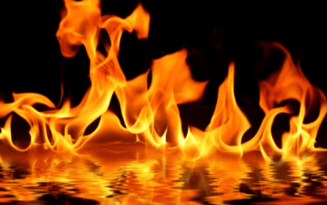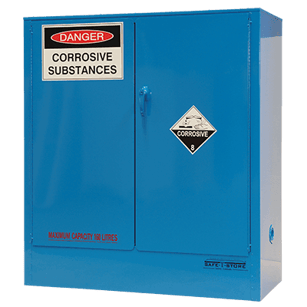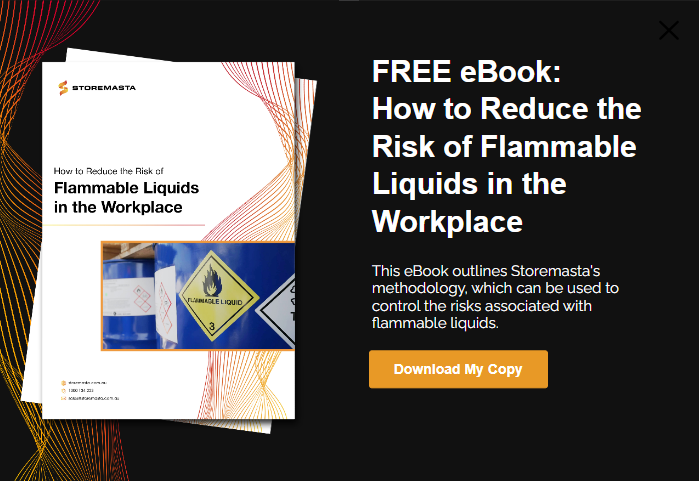Did you know that not all dangerous substances and articles can be stored in a flammable storage cabinet? There are 9 different classes of dangerous goods and only Class 3 Flammable Liquids can be safely stored in flammable cabinets.
What Is a Flammable Liquid?
The Australian Dangerous Goods Code (ADGC) explains the definition of flammable liquids:
2.3.1 DEFINITION AND GENERAL PROVISIONS
2.3.1.2 Flammable liquids are liquids, or mixtures of liquids, or liquids containing solids in solution or suspension (for example, paints, varnishes, lacquers, etc., but not including substances otherwise classified on account of their dangerous characteristics) which give off a flammable vapour at temperatures of not more than 60 °C, closed-cup test, or not more than 65.6 °C, open-cup test, normally referred to as the flash point.
Examples of Flammable Liquids
Some common examples of Class 3 Flammable Liquids found in the workplace include:
- petrol
- methylated spirits
- acetone
- mineral spirits “paint thinners”
 Paint Thinners
Paint Thinners
What Substances Should Not Be Stored with Flammable Liquids?
As we discussed earlier in the blog, there are some classes of dangerous goods that should never be stored with flammable liquids. You must be careful not to store incompatible substances in a flammable liquids storage cabinet as it poses a serious risk to the people and property of your organisation.
Within the 9 dangerous goods classes, there are some goods that are incompatible with flammable liquids. A dangerous goods segregation chart is a useful tool in determining the compatibility of flammable liquids with other classes of dangerous goods.
Dangerous Goods Storage
When considering your storage options, remember that each dangerous goods storage cabinet is manufactured to specifically store one dangerous goods class.
A cabinet constructed for the storage of flammable liquids will be incapable of safely storing corrosive substances or other classes of dangerous goods. As there is a different dangerous goods standard that outlines the storage and handling requirements for each dangerous goods class, your cabinet will feature specific construction requirements.
The Australian Standard that outlines the storage requirements for flammable storage cabinets is AS1940-2017. As there are many substances that are incompatible with flammable liquids, it is very important that you only store class 3 dangerous goods inside flammable storage cabinets.
What Substances Can You Store in Your Cabinet?
We’ll now have a look at some substances that can (and can’t) be stored in a flammable liquid's storage cabinet.
Petrol
Petrol, also known as gasoline, is a mixture of hydrocarbons that are obtained from the fractional distillation of crude oil. Petrol is a very volatile substance with a flash point of around -40 °C. Petrol is mainly used for internal combustion engines that power cars, machinery and generators. According to the Australian Dangerous Goods Code, petrol fuel is classified as a Class 3 Flammable liquid. Because of its dangerous goods classification, petrol can be safely stored in a flammable liquids storage cabinet.
Keep in mind that your flammable storage cabinet may need a ventilation system if the stored petrol gives off high concentrations of flammable vapours.
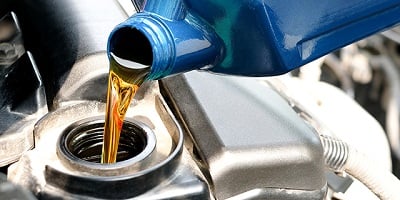 Petrol
Petrol
Methylated Spirits
Methylated spirits are a type of alcohol that consists of mainly ethanol and around 10% methanol. Methylated spirits are unsuitable for consumption but have many uses across a broad range of industries. This substance is commonly used as a fuel, a cleaning agent, and sometimes in laboratory processes. The Australian Dangerous Goods Code classifies methylated spirits as a Class 3 Flammable Liquid. Due to its dangerous goods classification, methylated spirits can be safely stored in flammable liquids storage cabinets.
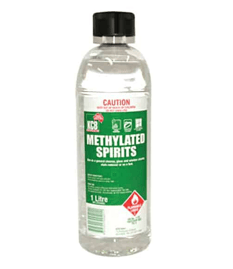 Methylated Spirits
Methylated Spirits
Acetone
Acetone is an organic compound with the chemical formula of (CH₃)₂CO. It is a colourless volatile flammable liquid. Acetone is commonly used as a solvent and a cleaning agent in laboratories. Large volumes of acetone are used to produce methyl methacrylate, which is a substance that is used to produce perspex.
Acetone is also used to produce Bisphenol A (BPA), which is then used to produce plastics. Acetone has a flashpoint of around −20 °C and it is classified as a class 3 flammable liquid according to the Australian Dangerous Goods Code. It can be safely stored in a flammable liquids storage cabinet.
 Acetone
Acetone
Paint Thinners
Paint thinners are mineral spirits that are used to thin or strip paints. Paint thinners have similar properties to acetone, however, they also have key differences. Acetone is a general solvent which is commonly used to clean and thin a variety of substances. Paint thinners are specifically used to thin paints. For example, if you used acetone to thin automotive paint, there won’t be a successful outcome. Instead, the acetone will cause your auto paint to ripple and you won’t achieve a unique sheen. As paint thinners are classified as Class 3 Flammable Liquids, they can be safely stored in a flammable storage cabinet.
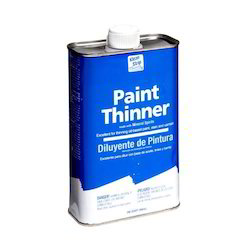 Paint Thinners
Paint Thinners
Aerosols
The Australian Standard AS1940-2017 gives you the provision to store Class 2.1 or Class 2.2 aerosols in flammable storage cabinets. However, special conditions do apply.
AS 1940-2017 states:
Aerosols of Divisions 2.1 and 2.2 may be stored in a store for Class 3 dangerous goods if projectile protection (e.g. cages) is provided.
Therefore, if you have an empty flammable cabinet and want to recommission it for another Dangerous Goods class, your only option is to use the (thoroughly cleaned) cabinet to store either Class 2.1 or 2.2 aerosols. Remember though, these gases are incompatible with each other and incompatible with Class 3 Flammable Liquids, so the rules of chemical segregation do apply.
You may store either Class 2.1 or Class 2.2 aerosols in a flammable cabinet, as the cabinet has self-closing doors and the walls of the cabinet prevent projectiles in the event of a fire.
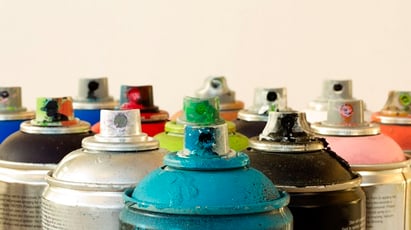 Aerosol
Aerosol
What Can’t Be Stored in Flammable Liquids Cabinets?
Substances that aren't classified as a Class 3 Flammable Liquids can’t be stored in a flammable liquids storage cabinet, as the mixing of incompatible classes of dangerous goods will cause a violent chemical reaction.
These substances must be segregated from flammable liquids by a specific distance as detailed in the dangerous goods segregation chart, or stored in separate cabinets:
- Class 1 Explosives
- Class 2 Gases
- Class 4 Flammable Solids
- Class5.1 Oxidizing Agents
- Class 5.2 Organic Peroxides
- Class 6 Toxic Substances
- Class 8 Corrosive Substances
These substances are all incompatible with flammable liquids — and must be segregated at all times.
Flammable cabinets, just like any dangerous goods storage solution, are specifically designed and constructed to meet the requirements of the Australian Standards. Therefore, you should always store your chemicals in a cabinet that’s been constructed specifically for that class of dangerous goods.
For example, a flammable storage cabinet does not have a corrosive resistant lining or a latch that will allow you to open the door from within the cabinet. Therefore, corrosive substances such as hydrochloric acid and sodium hydroxide can’t be stored in flammable storage cabinets.
Class 5.1 Oxidising agents such as hydrogen peroxide can’t be safely stored in flammable storage cabinets. Flammable storage cabinets don’t have doors that will automatically release in the event of a build-up of pressure inside the cabinet, which makes them incompatible with oxidizing agents that can release high volumes of gas.
Corrosive substances must be stored in corrosive storage cabinets that have been manufactured in full conformance to AS3780-2008. Oxidizing agents must be stored in safety cabinets that have been designed and manufactured to meet the requirements of AS4326-2008.
Is Your Flammable Cabinet Compliant?
Dangerous goods storage cabinets must be manufactured to safeguard people, property and the environment from the specific hazardous properties associated with the dangerous substance that is being stored within the cabinet. Flammable storage cabinets are manufactured in full conformance with AS1940, which only qualifies them for the storage of Class 3 Flammable Liquids. If incompatible classes of dangerous goods are stored together in a flammable storage cabinet, there is a possibility that they will mix and cause a violent chemical reaction. If you’re interested in learning more about flammable liquid storage, please download our FREE eBook How to Reduce the Risk of Flammable Liquids in the Workplace. You can access our helpful eBook by clicking on the image below.
Joining the team as a Dangerous Goods Storage Consultant, Melissa Hampton became Storemasta's Marketing Manager in late 2021. With extensive knowledge and experience in chemical compliance, Melissa is responsible for leading the Marketing team and helping shape their marketing strategy. In her spare time, you can find Melissa hiking, swimming and enjoying the great outdoors in beautiful north-west Tasmania.
